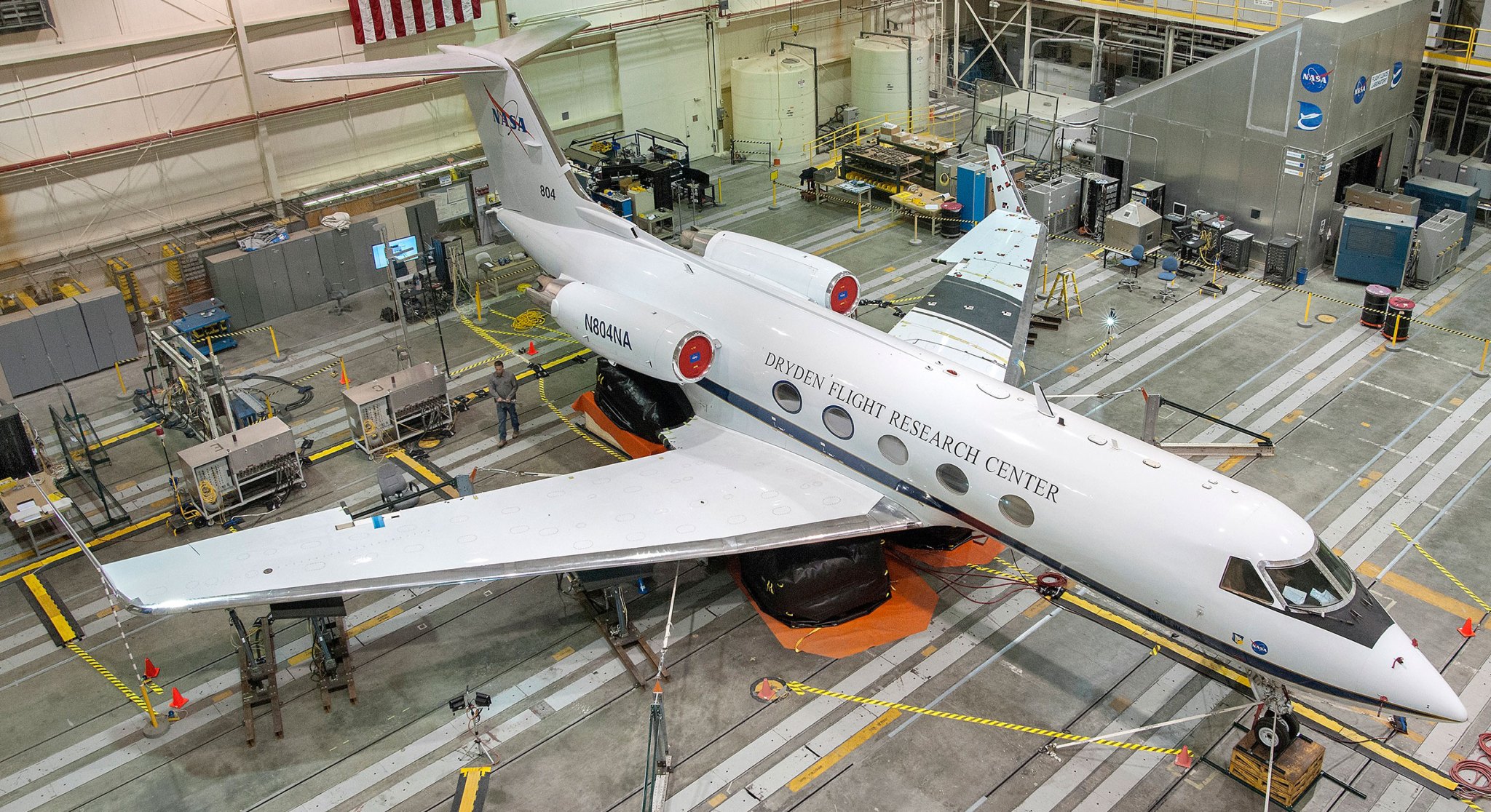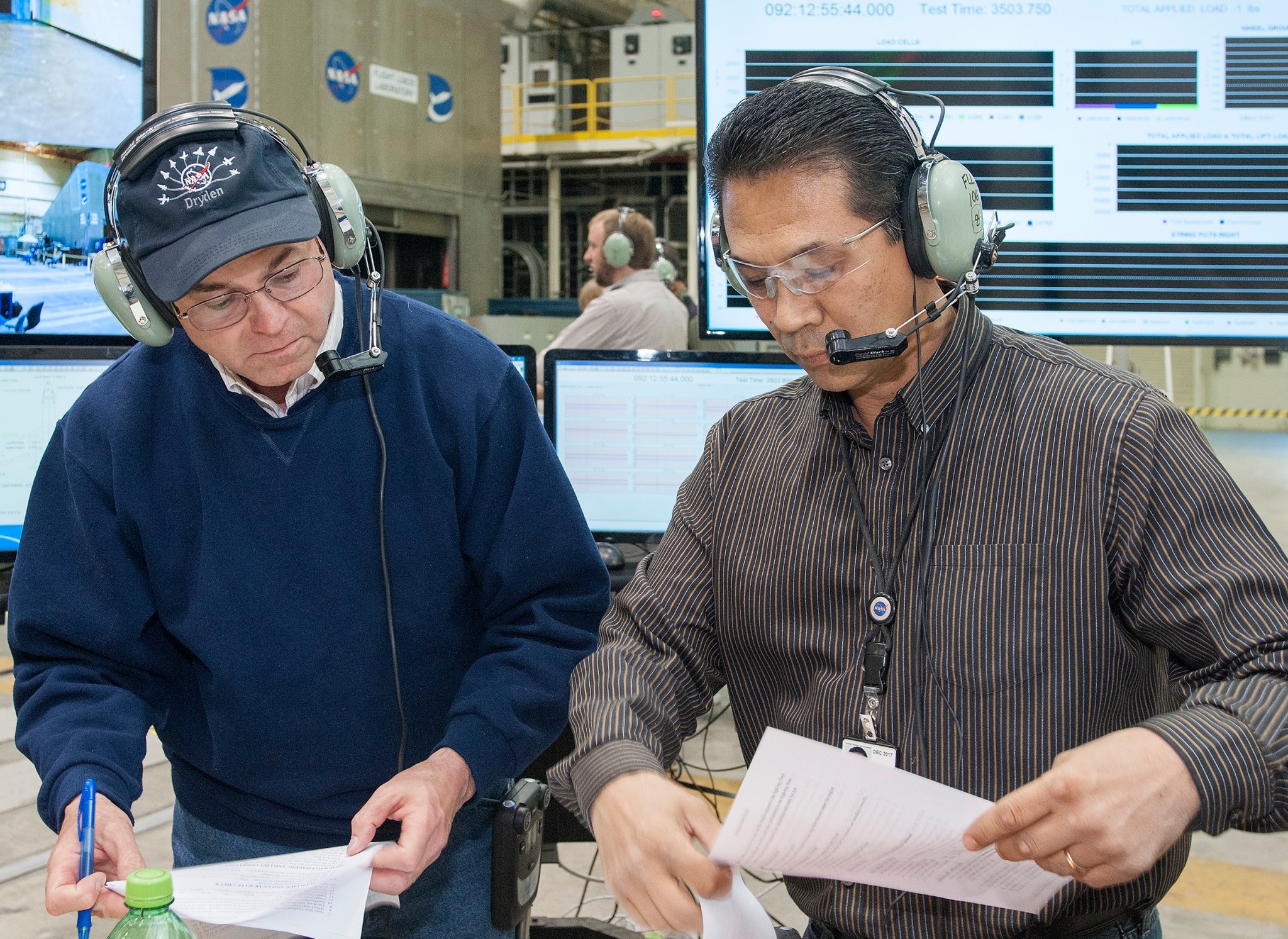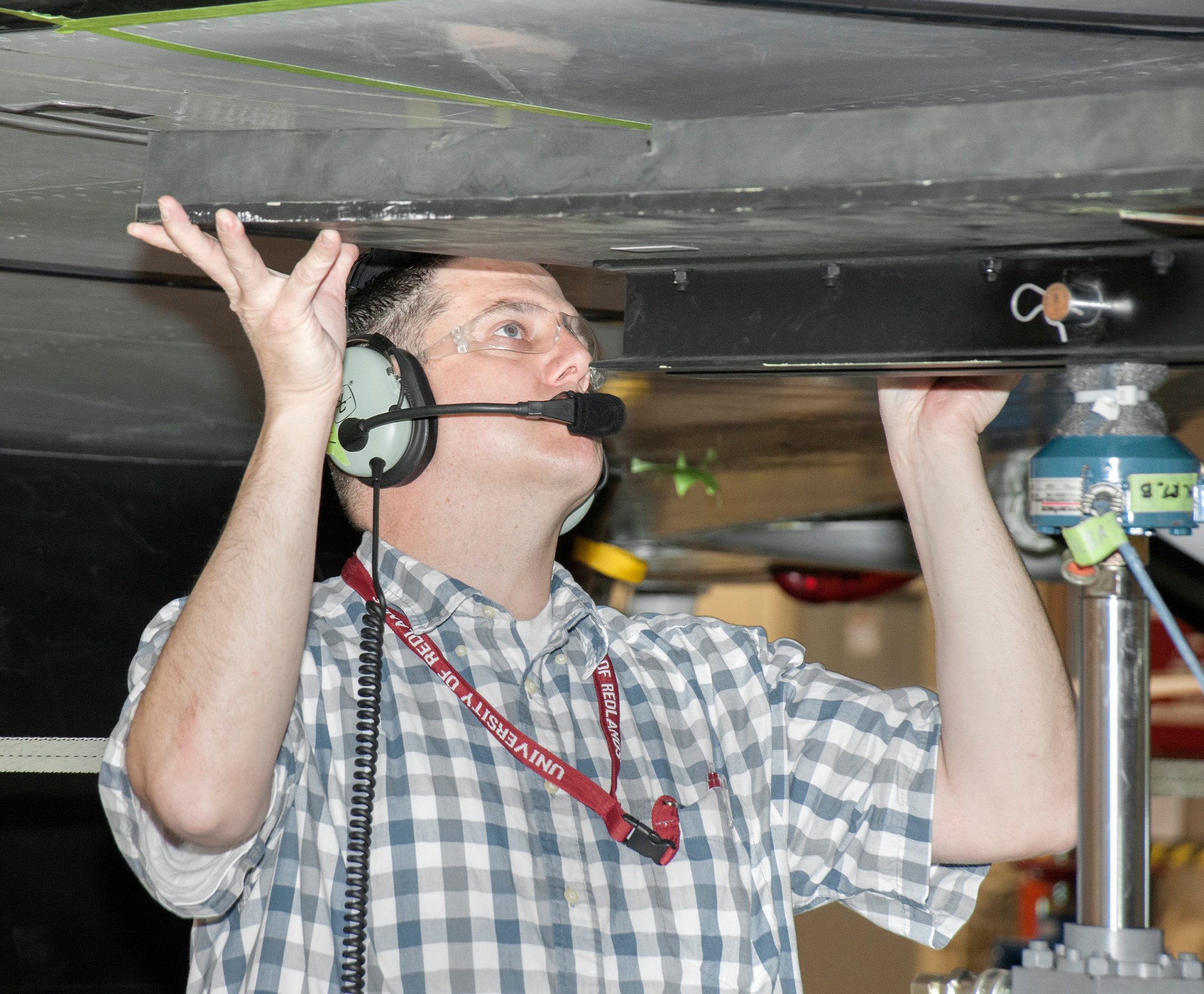Technicians at NASA Armstrong Flight Research Center’s Flight Loads Laboratory recently completed structural evaluations on a modified Gulfstream G-III aircraft that will serve as a test bed for the Adaptive Compliant Trailing Edge (ACTE) project.
The loads tests assisted engineers in predicting the levels of structural stress the airplane will likely experience during ACTE research flights. And for the first time, some unusual hardware aided the process: the aircraft was supported by three large inflatable airbags during the tests.
ACTE project researchers have replaced the airplane’s conventional aluminum flaps with advanced, shape-changing assemblies that form continuous conformal surfaces with no visible gaps. Evaluation of the revolutionary new flap system is a joint effort between NASA and the U.S. Air Force Research Laboratory. The advanced flexible trailing-edge wing flaps have the potential to improve aircraft aerodynamic and fuel-use efficiency and reduce airport-area noise generated during takeoff and landing.
FlexSys, Inc., of Ann Arbor, Mich., developed the new experimental flaps for installation on Armstrong’s G-III Aerodynamics Research Test Bed aircraft. Flight testing is expected to begin later this summer.
Before flying the airplane in the ACTE configuration, technicians had to conduct specialized ground tests that involved applying known stresses, or loads, via hydraulic jacks to the aircraft. Scientifically calibrated strain gages provided researchers with highly accurate measurements of the applied stresses, enabling them to predict the structural performance of the aircraft in flight. According to chief test engineer Larry Hudson, “Doing a test of this nature enables us to understand on the ground, by applying certain loads into the airplane, what loads will be experienced in flight under similar conditions.”
Lifting the airplane off the loads lab floor with the three inflatable airbags, the first step in the testing process, helped isolate the airframe from any potential influence of the landing gear on strain-gage data. According to principal investigator Bill Lokos, this method has never been used before in the center’s loads lab.
The airbags were positioned beneath the wings and aft fuselage to keep the main gear tires off the floor so that loading throughout the aircraft’s center wing box structure remained constant. This was necessary, Lokos explained, because increased loading on the wings typically resulted in decreased loads on the gear, which affected the strain-gage measurements and skewed the results of the preliminary equations.
Supporting the G-III with standard aircraft jacks was not an option, he noted, because the effects were even more pronounced than those produced by the gear alone. Alternatively, using a cradle system would have been costly and time consuming. Airbags of the type used to lift aircraft in the field following gear-up landings were already available as proven, off-the-shelf hardware.
Once the G-III was properly positioned, lab technicians applied loads via hydraulic jacks positioned underneath the wings. Structures lead Eric Miller explained that combining known loads values with strain-gage responses in the lab helps researchers develop a database for validating or correcting existing load equations.
“We’ll be able to correlate these data so that we can drive our own load equations and be able to monitor flight loads in real time during ACTE flight tests,” he said.
“This test will either validate those equations,” Lokos added, “or help fix them if we find that they’re off.”
Successful ground testing is key to successful flight-testing. A comprehensive set of data and accurate loads equations will result in more precise flight-test data and enhance safety of flight because researchers will be able to expand the flight-test envelope without exceeding the aircraft’s structural limits.
“It’s important that we have a small error band and that we know what it is, so we won’t cause harm to the airplane while testing the new flap,” Lokos added.
The ACTE effort is part of NASA’s Environmentally Responsible Aviation (ERA) project under the Integrated Systems Research Program of NASA’s Aeronautics Research Mission Directorate. The ERA project explores and documents the feasibility, benefits and technical risk of vehicle concepts and enabling technologies to reduce aviation’s impact on the environment.
Author: Peter Merlin, Public Affairs





































